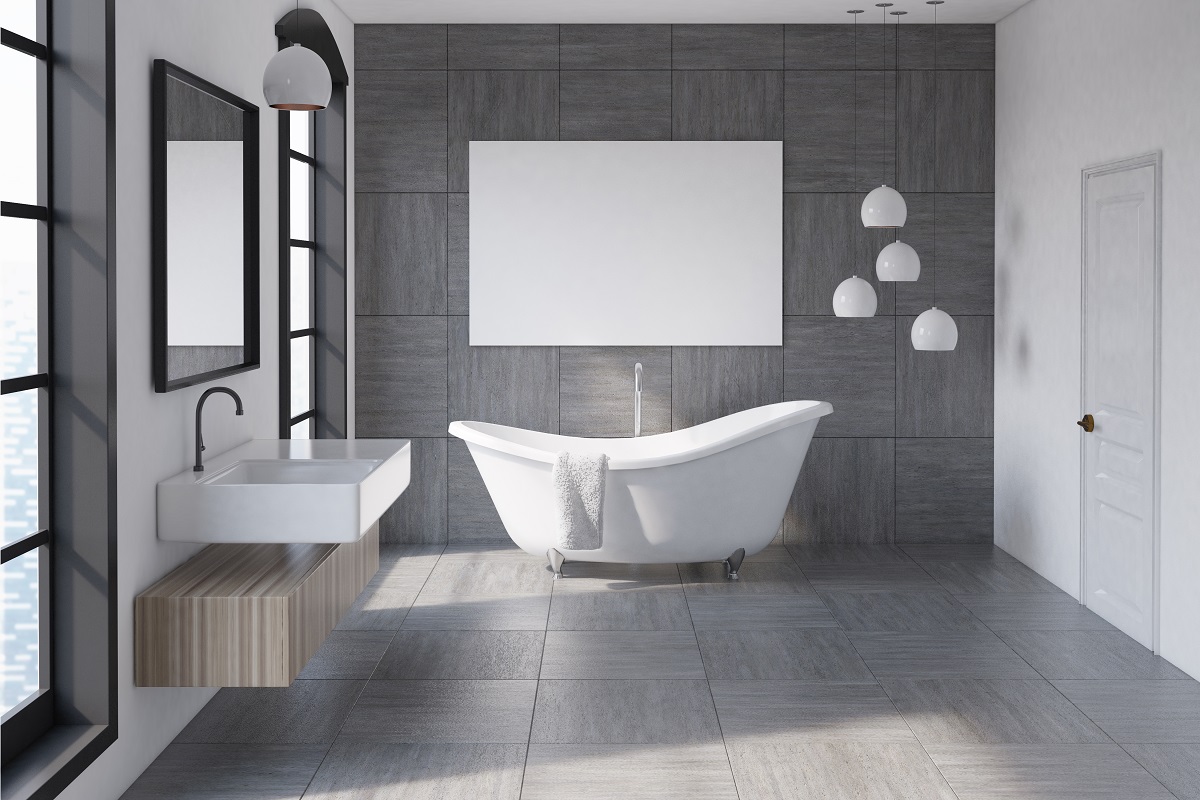
So you’re thinking about doing some home renovations, starting a house build from scratch, or simply considering replacing some shaggy carpet, but knowing what type of flooring best fits into certain rooms is tricky.
Hardwood or laminate? Tile or carpet? There are so many to choose from, and they all have different qualities.
Knowing what material will work best for you, the room your working on, and your circumstances is tough.
But try not to stress as we go through some of the different flooring options there are so you can pick the right one.
Hardwood

Tried and tested, you can very rarely go wrong with a strong and warm-looking hardwood floor. This has been one of the most popular options in Australia for decades, and even now it’s being used in new apartment developments hitting the Australian property market.
It can be made from many kinds of wood, from fairly common species such as oak and maple to exotic varieties such as Brazilian cherry or purpleheart. But whatever the type, it’s easy to see why this is such a widely-used choice.
Pros
It blends in seamlessly with a variety of different styles, allowing it to easily fit into your home decor. It is also very long-lasting and can be refinished a number of times to remove surface scratches.
Wood floors are fairly easy to clean, normally a good mop will remove any spills promptly. Installation can also be a reasonably easy DIY project, allowing you to save money on the job.
Cons
Perhaps the biggest downfall of hardwood floors is that they don’t stand up well to rough handling. They can warp if they’re exposed to moisture or underfloor heating. This can make them a bad choice for bathrooms and laundry rooms, or areas which are prone to big fluctuations in temperature.
Where
Wood flooring, in general, is best for spaces that don’t get a lot of traffic, such as living rooms, halls and even bedrooms. Some people use it in kitchens, but Consumer Reports advises against this, saying that wood flooring can’t handle the onslaught of dragging chairs, dropped cans, or grit-covered shoes.
Engineered Wood

This type of wood flooring looks like hardwood, but it’s made in a different way. It has a thin veneer of natural wood on top, showing the grain, with layers of less expensive plywood underneath. This makes engineered wood both cheaper and sturdier, allowing it to go in areas with more footfall.
Pros
Engineered wood floors can give you the look of solid wood at a marginally lower price. They’re more stable than solid wood and less sensitive to changes in temperature and humidity.
The thinner nature of this flooring allows you to install it on top of a concrete subfloor, or even old hardwood floors, saving you the work and expense of ripping out the old floor before installing the new one.
Cons
Despite its increased durability, it’s not exactly indestructible. Engineered wood, like hardwood, can scratch or dent fairly easily, while the number of times it can be refinished is less before you risk wearing through the veneer to the plywood underneath.
Where
Engineered wood can work well in all the same spaces as solid wood. In addition, it’s suitable for basements and enclosed porches.
Laminate

Although constructed in much the same way as engineered wood, the top layer is not wood. Instead, it has a photograph under a clear plastic coating applied over the top, meaning it can be made to look like stone, tile, or just about any other material.
Laminate can come in either planks or tiles and can be installed straight over the top of old flooring with no glue or nails.
Pros
It can mimic the look of wood or stone for much less money and also requires far less cleaning and maintenance. It’s a hard material that resists scratching and scuffing better than real wood.
Cons
Its film-like structure makes it slippery when wet, making it a poor choice for bathrooms. If water stands on it for any length of time, it can get in between the layers of the material, causing the planks to warp.
Unlike hardwood or engineered wood, laminate can’t be refinished when it wears out, only replaced. That can make it a less cost-effective choice over the long term.
Where
Laminate is the perfect material for high-traffic areas, such as kitchens, foyers and playrooms. It is also a reasonable choice for basements as long as they have no problem with leaks. However, it’s best to avoid bathrooms and laundry rooms.
Tile

Tile is an incredibly versatile and easy to maintain option, making it a popular choice for a number of rooms — most notably the bathroom.
Pros
If any stains, dirt, or liquids get on it, this will all rest on top of it and won’t get absorbed. This means it is easy to mop them up or wipe them away.
When you get a quality installation done, the tiles can last up to 20 years or even longer if you do a good job maintaining them. Even if one tile does crack, it is often only because of a severe impact, and you’ll find it easy to replace that tile. This means you’ll be able to keep your overall cost down.
Cons
Tile flooring does not absorb or hold onto heat well, which means it can get quite cold during the winter. So first thing in the morning, without an underfloor heating system, it can prove quite a shock to your bare feet. The flip-side is that in the summer, it can prove to be a useful quality.
Depending on their thickness and material, the tiles can be very heavy, which makes them a poor choice for upper-story installations. So if you’re thinking about installing tile flooring on the top floor, check to see if your home can handle the stress.
Where
Tile flooring’s durability and low maintenance make it a good physical choice in almost any room. However, it’s hardness and the general cooling element it provides to a room make it an uncommon choice for bedrooms and living rooms.
Carpet

Carpet’s soft nature makes it a perennial favourite for bedrooms and living areas. There are several varieties of colours, textures, and materials when it comes to carpet, and which one you choose largely depends on what room you’re looking to fill it with and how much money you’re willing to spend.
- Wool: a durable material that naturally resists moisture and stains.
- Nylon: a strong, wear-resistant synthetic material that lasts a long time and can be recycled at the end of its life
- Acrylic: a synthetic material that’s resistant to mildew, crushing, and insect damage
- Polyester: a moisture-resistant synthetic fibre that can be dyed to produce bright colours but is vulnerable to staining
- Polypropylene: a plastic, highly resistant to moisture, mildew, and stains, which can be used both indoors and outdoors
Pros
Many people like carpet because it is soft and warm underfoot. It’s also quiet, slip-resistant, and fairly easy to install.
Cons
It’s much more difficult to clean than any of the other flooring options discussed in this article. ‘How to get a wine stain out of a carpet’ appears at the top of Google searches for a reason.
The soft fibres of a carpet can harbour allergens such as pollen and pet dander, making it a bad choice if anyone in your home suffers from allergies.
Where
Carpet is ideal for places where less dirt is tracked, like bedrooms and living rooms. Polypropylene carpets can even work in outdoor spaces such as enclosed porches.
Click here to read about which rug goes best with your flooring option.


